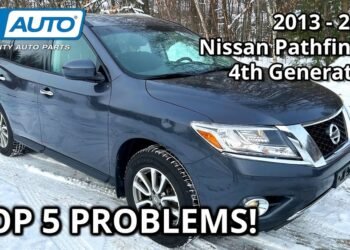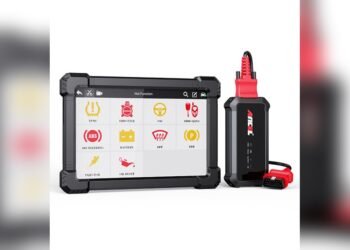Jeep overheating can stem from a faulty thermostat or a compromised radiator. Regular maintenance checks can prevent such issues from escalating.
Encountering an overheating Jeep can be both alarming and frustrating for any driver. It’s a common problem that, if left unchecked, can lead to significant engine damage. To get ahead of this, owners should understand the common culprits behind overheating, such as a malfunctioning cooling system or a leak in the coolant hose.
A well-maintained Jeep should have its coolant levels, hoses, and radiator checked periodically to ensure everything is functioning properly. Addressing these issues promptly can save time and money, and keep your Jeep running smoothly. Remember, a cool engine is a happy engine, and with the right care, you can avoid the inconvenience and danger of an overheating vehicle.
Credit: www.jlwranglerforums.com
Jeep Overheating Troubleshooting
Jeep owners love the ruggedness and durability of their vehicles. Yet, no vehicle is immune to problems, and overheating is a common issue that can strike a Jeep. Understanding why a Jeep overheats and spotting the symptoms early on is crucial for maintaining your vehicle’s health and ensuring your safety on and off the road. Let’s dive into Jeep overheating troubleshooting and uncover the symptoms and common causes.
Symptoms Of An Overheating Jeep
- Temperature Gauge Spike: The dashboard shows the temp rising quickly.
- Steam from the Hood: White steam billows out when the engine is too hot.
- Engine Warning Lights: The check engine light or temperature light activates.
- Hot Hood: The hood feels unusually hot to the touch.
- Strange Smells: A sweet, metallic scent may indicate coolant leaks.
- Poor Engine Performance: The Jeep struggles or stalls during operation.
Common Causes Behind The Heat
Various factors can cause a Jeep to overheat. Pinpointing the exact cause is key to a quick fix.
| Cause | Description | Quick Check |
|---|---|---|
| Coolant Issues | Low or leaking coolant affects engine temperature. | Inspect for leaks, check coolant level. |
| Thermostat Failure | A stuck thermostat can cause overheating. | Test or replace the thermostat. |
| Radiator Problems | Blockages or leaks in the radiator prevent proper cooling. | Look for leaks, check for blockages. |
| Water Pump Failure | The water pump circulates coolant; if it fails, the engine heats up. | Listen for unusual noises, check for leaks. |
| Fan Malfunction | Electric or mechanical fan issues can lead to poor ventilation. | Inspect fan operation and condition. |
| Belt and Hose Wear | Worn belts and hoses can affect the cooling system. | Check for cracks, brittleness, and tension. |
Initial Steps To Cool Down
Jeep overheating can turn a great ride sour. Knowing the right steps to cool down your vehicle is crucial. The following guide offers practical, immediate solutions.
Safety First: What To Do Immediately
Pull over and turn off your engine. This prevents further damage. Keep a safe distance from traffic. Do not open the hood immediately to avoid burns.
Short-term Solutions On The Road
When your Jeep starts to overheat, certain short-term fixes can help. These are not permanent but they can get you to a service station.
- Turn off the AC – This reduces engine strain.
- Turn on the heater – It sounds counterintuitive, but it can draw heat away from the engine.
- Check the coolant – After the engine cools, check the coolant level. Fill it if it’s low.
Coolant System Checks
Jeep owners love adventure, but a hot engine is a no-go. Let’s dive into the coolant system checks.
Inspecting Coolant Levels And Quality
Regular checks keep your Jeep cool. Here’s how:
- Turn off your Jeep. Let it cool.
- Open the hood and find the coolant reservoir.
- Check for coolant level. It should be between ‘Min’ and ‘Max’.
- Look at the coolant color. It should be clean, not murky.
- If low, add coolant. Use the right type for your Jeep.
Radiator And Hose Inspection For Leaks
Leaks lead to overheating. Prevent this:
- Inspect the radiator for any signs of corrosion or damage.
- Check hoses for cracks, soft spots, or brittleness.
- Look for wet spots or drips under the Jeep.
- Use a pressure tester for hidden leaks.
- Replace any damaged parts immediately.

Credit: m.youtube.com
Thermostat Troubles
Jeep engines rely on a working thermostat. This part regulates the engine’s temperature. A faulty thermostat can cause overheating. It’s a common issue for Jeep owners. Let’s dive into diagnosing and replacing a bad thermostat.
Diagnosing Thermostat Failures
Spotting a bad thermostat involves a few steps. Symptoms include rising engine temperatures and heater problems. Use these tips to diagnose a thermostat failure:
- Check temperature gauge: A fluctuating gauge indicates trouble.
- Feel the radiator hoses: One hot and one cold hose suggest a bad thermostat.
- Observe the coolant flow: No flow might mean the thermostat is not opening.
Performing these checks can confirm a thermostat issue. Now, let’s learn about replacing it.
Replacing A Faulty Thermostat
Replacing a bad thermostat is a vital step to prevent overheating. Follow these steps to replace a Jeep thermostat:
- Allow engine to cool: Never work on a hot engine.
- Drain coolant: Remove the radiator cap and drain the coolant.
- Remove the thermostat housing: Unscrew the bolts on the housing.
- Take out the old thermostat: Note its orientation before removing.
- Install the new thermostat: Ensure it’s placed in the correct direction.
- Reassemble and refill coolant: Screw the housing back and refill.
- Test your work: Start the engine and check for leaks.
Proper installation ensures your Jeep’s temperature stays regulated. This way, you can enjoy safe and worry-free adventures.
Water Pump Warnings
Jeep overheating can spell trouble. The water pump plays a vital role in keeping your engine cool. When it fails, your Jeep may overheat. It’s key to spot water pump issues early. This will prevent further damage to your engine. Let’s explore how to identify these problems and replace a faulty water pump.
Identifying Water Pump Issues
Look for tell-tale signs that your water pump needs attention:
- Coolant leaks near the front of your car.
- Whining sounds from the engine bay.
- Steam coming from your radiator.
Check the coolant reservoir for drops in levels. Also, inspect the water pump pulley. If it’s loose, it’s a red flag.
Steps To Replace A Water Pump
Follow these steps to replace your Jeep’s water pump:
- Ensure the engine is cool.
- Disconnect the battery.
- Drain the coolant system.
- Remove the belts and pulleys.
- Unbolt and remove the old water pump.
- Clean the mounting surface.
- Install the new water pump.
- Reassemble belts and pulleys.
- Refill the coolant system.
- Reconnect the battery.
- Start the engine and check for leaks.
Always use a new gasket and sealant for a proper seal. Tighten the bolts to the manufacturer’s specifications.
Fan Functionality
Jeep engines work hard, especially off-road. Overheating can stop adventures fast. Fan functionality is vital. It cools the engine, prevents damage.
Assessing Electric And Mechanical Fans
Jeeps use two fan types: electric and mechanical. Each has unique signs when failing.
- Electric fans activate with engine temperature. They should spin when hot.
- Mechanical fans link to the engine. They turn with the engine’s power.
Check fan operation regularly. Listen for unusual noises, watch for erratic spinning.
Quick Fixes For Fan Problems
Some fan issues have simple solutions. Others may need professional help.
| Problem | Quick Fix |
|---|---|
| Debris | Clear fan blades and area. |
| Loose wiring | Secure connections. |
| Blown fuse | Replace with new one. |
For persistent problems, consult a mechanic. They can diagnose deeper issues.
Belt And Pulley Breakdown
Jeep owners often face an issue called Belt and Pulley Breakdown. This problem can cause your Jeep to overheat. Let’s dive into how to spot and fix this issue.
Checking For Belt Wear And Tear
Belts are crucial for your Jeep’s cooling system. A damaged belt can lead to overheating. Here’s how to check it:
- Look for cracks or frays on the belt’s surface.
- Feel the belt for any signs of looseness or wear.
- If you spot damage, replace the belt immediately.
Pulley System Inspection
The pulley system helps drive the belt. A faulty pulley can cause the belt to slip or break. Here’s how to inspect the pulley system:
- Check for any wobble in the pulleys.
- Listen for unusual noises like squeaking or grinding.
- If you find any issues, get the pulley replaced or fixed.
Regular checks can prevent overheating problems in your Jeep. Always ensure the belt and pulley system are in good condition.
Engine Maintenance
Maintaining your Jeep’s engine is vital for preventing overheating. A well-maintained engine runs cooler and more efficiently. Let’s explore key practices for keeping your Jeep’s engine in top condition.
Regular Oil Changes
Regular oil changes keep engines happy and healthy. Old oil leads to friction. Friction generates heat. Heat causes overheating. It’s that simple.
Follow Jeep’s recommended oil change schedule. Use the right oil type. Your engine will thank you with cooler running temperatures and improved performance.
Monitoring Engine Performance
Keep an eye on engine performance. It’s a clear indicator of health. Notice unusual noises or behavior? Act fast. Early detection can prevent serious damage and overheating.
- Check engine light on? Read the codes.
- Engine running rough? Inspect spark plugs and timing.
- Temperatures rising? Check the cooling system.
Use a diagnostic tool for deeper insight. This helps spot potential problems before they lead to overheating. Regular checks ensure a smooth ride and cool engine.
Preventive Measures
Jeep owners know the importance of keeping their vehicles cool. Overheating can lead to serious damage. But with the right preventive measures, you can ensure your Jeep runs smoothly, even on the hottest days. Let’s dive into the upgrades and checks that can save you from the heat.
Upgrading Cooling Components
A robust cooling system is key to preventing overheating. Here are top upgrades:
- Performance radiators – They dissipate heat more efficiently.
- High-flow water pumps – They improve coolant circulation.
- Thermostats – Upgraded ones maintain optimal temperatures.
- Coolant additives – These enhance heat transfer.
Seasonal Checks And Balances
Seasonal maintenance keeps Jeeps ready for any weather. Follow these tips:
| Season | Checklist |
|---|---|
| Spring |
|
| Summer |
|
| Fall |
|
| Winter |
|
Stick to this guide and enjoy a cool, reliable ride in your Jeep. Remember, regular checks and smart upgrades can prevent most overheating issues.

Credit: m.youtube.com
Frequently Asked Questions
Why Is My Jeep Suddenly Overheating?
Your Jeep may overheat due to a low coolant level, a malfunctioning thermostat, a blocked radiator, or a failing water pump. Regular maintenance checks can help prevent these issues.
How Do You Diagnose Overheating Problems?
To diagnose overheating, check the coolant level, inspect hoses for leaks, monitor the thermostat, evaluate the radiator, and test the water pump.
How Do I Know If My Thermostat Is Bad In My Jeep?
To determine if your Jeep’s thermostat is faulty, check for engine overheating, fluctuating temperatures, and heater malfunctions. A mechanic can confirm issues with a diagnostic check.
Why Is There Coolant But Still Overheating?
Coolant overheating can occur despite its presence due to a faulty thermostat, clogged radiator, broken water pump, or leaking cooling system. Ensuring these components function properly helps prevent overheating.
Why Do Jeeps Overheat?
Jeeps can overheat due to a malfunctioning thermostat, clogged radiator, faulty water pump, or low coolant levels. Regular maintenance is key.
Conclusion
Dealing with an overheating Jeep can be stressful, but understanding the common causes simplifies the process. Regular maintenance and monitoring are key to preventing future issues. Remember, tackling problems early on can save time and money. Keep this guide handy for a quick reference whenever your Jeep shows signs of overheating.
Stay cool, stay safe.
















